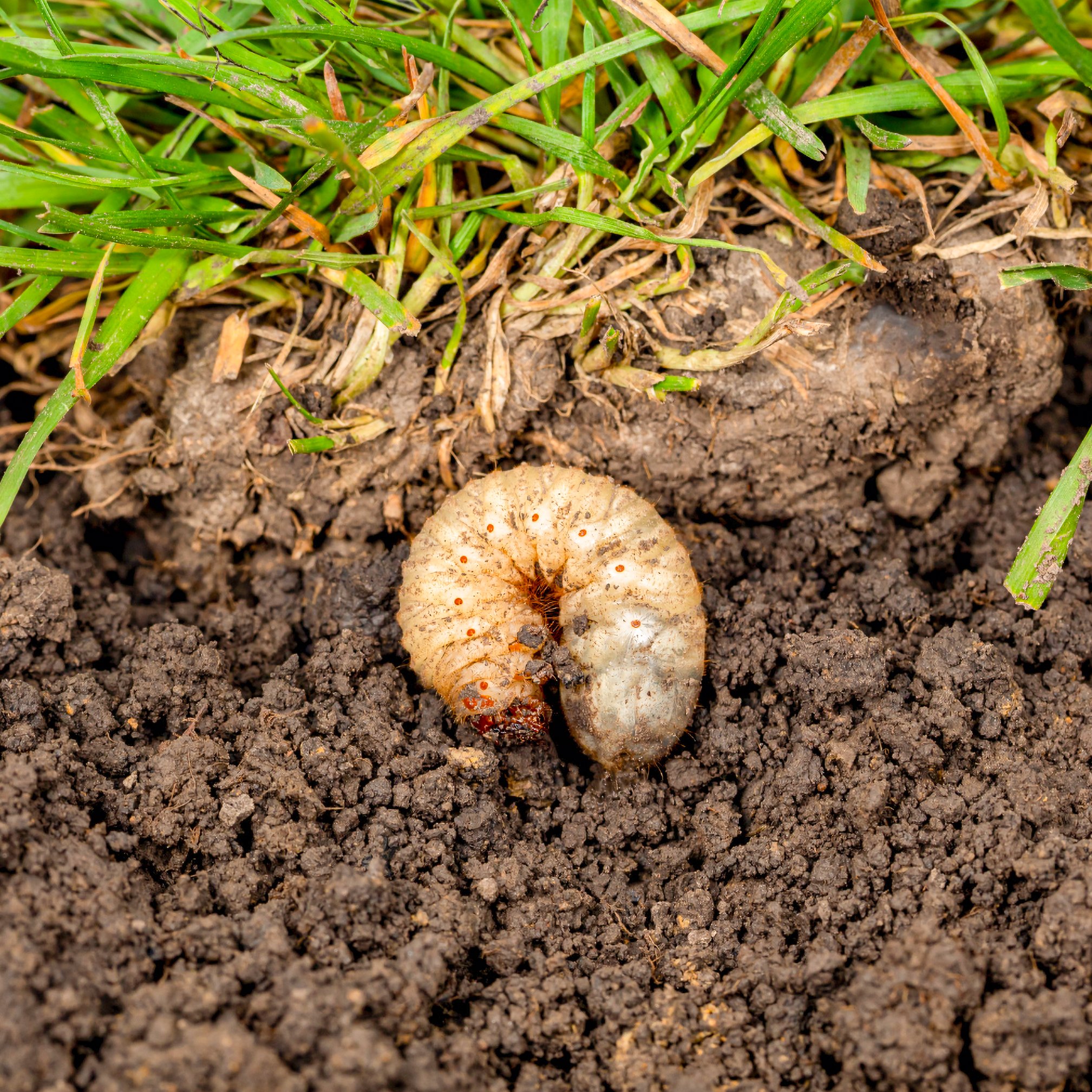Spoiler alert: It’s not too late—but timing is everything!
As the leaves turn and pumpkin spice takes over Southeast Michigan, homeowners might be wondering: “Can I still treat my lawn for grubs in October?” The short answer? Yes—but you’ve got to act fast. Let’s dig into the dirt (literally) and talk grub control, fall lawn care, and how to protect your turf before winter hits.

What Are Grubs, and Why Should You Care?
Grubs are the C-shaped, creamy white larvae of beetles like Japanese beetles and European chafers. These underground munchers feast on your lawn’s roots, causing brown patches, spongy turf, and even attracting wildlife like skunks and raccoons who dig through the soil in search of a grub-filled snack.
In Southeast Michigan, grubs are most active in late summer through early fall, which means October is your last chance to stop them before they burrow deep for winter hibernation. [blog.lushlawn.com]

October Grub Control: What You Need to Know
Yes, You Can Still Treat—But Use Curative Products
Preventive grub control products like GrubEx1 or BioAdvanced Season Long work best in June and July, when grubs are just beginning to hatch. By October, however, grubs are fully grown and actively feeding near the surface, so you'll need curative treatments designed to target mature grubs.
Top Treatment Options:
- BioAdvanced 24-Hour Grub Killer Plus: A fast-acting solution ideal for tackling late-season grub infestations quickly and effectively.
- Dylox (Trichlorfon): A professional-grade treatment that works quickly against mature, actively feeding grubs..
- Sevin Insect Killer Concentrate: Offers broad-spectrum insect control for both
Don’t have time to apply these yourself—or just prefer to leave it to the pros?
We offer expert grub control services designed to protect your lawn and restore its health. Let our trained technicians handle the hard work so you can enjoy a lush, grub-free lawn without the hassle. Click Here To Explore Our Lawn Care Solutions.
How to Know If You Have a Grub Problem



- Brown patches of grass that lift up easily, almost like peeling carpet
- Increased digging from animals like skunks, raccoons, or birds searching for grubs
- Spongy or wilting turf, even with regular watering
- More than 5 grubs per square foot when you inspect the soil beneath your lawn
Pro Tips for Fall Grub Control
-
Check Before You Treat
Use a shovel to lift a 1-foot square section of turf, inspect the soil, and count the grubs. If you find 10 or more, it’s time to apply the treatment. -
Water After Application
After applying grub control, water your lawn thoroughly. Most grub control products need to be watered in after the application to be effective and reach the root zone, where grubs are actively feeding. -
Treat Only If Needed & Don’t Overdo It
Not every lawn needs grub control. If you find fewer than 3 grubs per square foot and your turf looks healthy, skip the treatment and simply monitor the area instead. -
Aerate and Fertilize
Once the treatment is done, help your lawn recover with core aeration and a fall fertilizer to strengthen the roots and prepare your turf before winter.
Last Chance for Fall Grub Control
October isn’t too late—but it’s your last call for grub control in Southeast Michigan. If you’ve spotted signs of damage or confirmed an infestation, don’t wait. Treat now, water well, and give your lawn the TLC it needs to bounce back before winter.
Need help identifying grubs or choosing the right product? Lush Lawn’s expert team is here to help. Contact us today for a free lawn inspection and customized grub control plan.
- Call Us! 866.668.5296
- marketing@LushLawn.com
